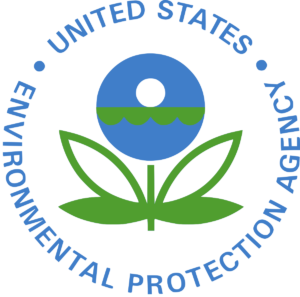
Reorganization and news of workforce cuts and/or abolishment altogether has plagued the Environmental Protection Agency for a while now. As the name suggests, the agency protects the environment, and so much more. Here’s a look at their history and what they do.
Mission
The agency’s overarching mission is to protect human health and the environment. They work to ensure:
- Americans have clean air, land, and water
- National efforts to reduce environmental risks are based on the best available scientific information
- Federal laws protecting human health and the environment ate administered and enforced fairly, effectively, and as Congress intended
- Environmental stewardship is integral to U.S. policies concerning natural resources, human health, economic growth, energy transportation, agriculture industry and international trade, and these factors are similarly considered in establishing environmental policy
- All parts of society—communities, individuals, businesses, and state, local, and tribal governments—have access to accurate information enough to effectively participate in managing human health and environmental risks
- Contaminated land and toxic sites are cleaned up by potentially responsible parties and revitalized
- Chemicals in the marketplace are reviewed for safety
To accomplish these missions, EPA:
Develops and Enforces Regulations
When Congress writes an environmental law, the EPA implements it by writing regulations.
Gives Grants
Nearly ½ their budget goes into grants to state environmental programs, non-profits, educational institutions and others.
Studies Environmental Issues
At labs nationwide, the agency identifies and tries to solve environmental problems. To learn more, they share information with other countries, private sector organizations, academic institutions, and other agencies.
Sponsors Partnerships
They work with businesses, non-profit organizations, and state and local governments through a lot of partnerships.
Teaches
They help people understand the issues, such as reducing how much energy and materials they use, reusing what they can and recycling the rest.
Publishes Information
History
EPA was established on December 2, 1970, in the wake of elevated concern about environmental pollution. Federal research, monitoring, standard-setting, and enforcement activities to ensure environmental protection were all consolidated into this one agency.
Origins
Conversations about protecting the environment began back in the 1960’s. Silent Spring, by Rachel Carson and published in 1962, attacked the use of pesticides.
A few disasters started creating concern about air and water pollution—an offshore oil rig in California spilling millions of gallons of oil; the Cuyahoga River near Cleveland, OH spontaneously burst into flames because of chemical contaminants; astronauts had begun photographing Earth from space heightening awareness that Earth’s resources are finite.
In early 1970, because of this heightened concern, President Richard Nixon presented the House and Senate a groundbreaking 37-point message on the environment. Points included:
- Requesting $4 billion for improvement of water treatment facilities
- Asking for national air quality standards and stringent guidelines to lower motor vehicle emissions
- Launching federally funded research to reduce automobile pollution
- Ordering cleanup of federal facilities that had fouled air or water
- Seeking legislation to end dumping of wastes into the Great Lakes
- Proposing a tax of level additives to gasoline
- Forwarding to Congress a plan to tighten safeguards on seaborne transportation of oil
- Approving a National Contingency Plan for treatment of oil spills
Around this time, Nixon also created a council to help consider how to organize federal government programs designed to reduce pollution, so those programs could efficiently address the goals laid out in his message.
Following the council’s recommendations, the President sent Congress a plan to consolidate many environmental responsibilities of the federal government under one agency, a new Environmental Protection Agency. This reorganization would permit response to environmental problems in a manner beyond the previous capability of government pollution control programs:
- EPA would have the capacity to do research on important pollutants irrespective of the media in which they appear and on the impact of these pollutants on the total environment.
- Both by itself and together with other agencies, EPA would monitor the condition of the environment—biological and physical.
- With this data, EPA would be able to establish quantitative “environmental baselines”—critical for efforts to measure adequately the success or failure of pollution abatement efforts.
- EPA would be able, in concert with the states, to set and enforce standards for air and water quality for individual pollutants.
- Industries seeking to minimize the adverse impact of their activities on the environment would be assured of consistent standards covering the full range of waste disposal problems.
- As states developed and expanded their own pollution control programs, they would be able to look to one agency to support their efforts with financial and technical assistance and training.
After hearings that summer, the House and Senate approved the proposal and the agency’s 1st Administrator, William Ruckelshaus, took an oath of office on December 4, 1970.


